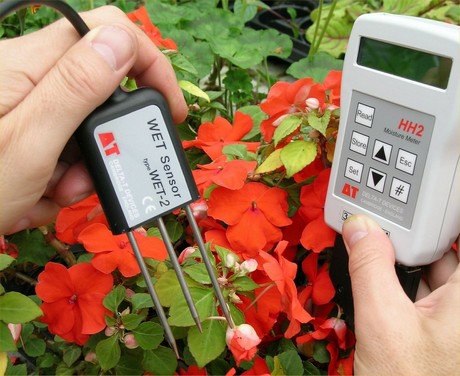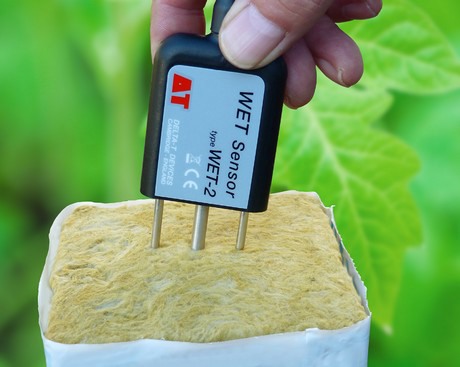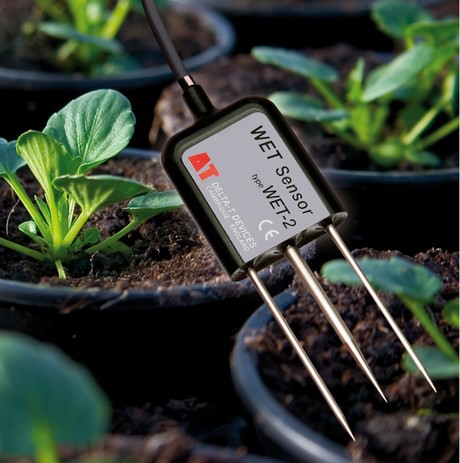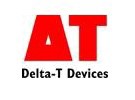The Delta-T Devices WET Sensor is an enhanced version of an instrument originally developed by Wageningen UR. It measures soil water content, pore water conductivity (EC) and soil temperature quickly and accurately. Its sharp stainless steel rods make it easy to push the sensor into substrates without disturbing the structure, which improves measurement accuracy. The central rod contains a miniature temperature sensor which means that this measurement is taken where it matters most, deep within the substrate. This is especially important for compensating the conductivity measurement, ensuring best accuracy.

A further enhancement to the accuracy of the WET Sensor is the use of specific soil calibrations, especially for substrates like mineral wool, coir and peat. “With the growing popularity of coir we've examined substrate from six different manufacturers using the WET Sensor.” said Delta T's Tony Peloe. “We were able to create an improved generic coir calibration for the sensor, but noted that there was a significant difference between some of the coir mixes we looked at. Users could, if they wish, use one of the available memory spaces in the HH2 to enter a specific substrate calibration (there is room for 5), and we can help to create these custom calibrations for them”.

Peloe affirms that this is just one of the possibilities in a certain substrate. "The WET-sensor works with a range of soils and substrates." In The Netherlands in particular, a lot of rockwool is being used, and many growers favour our instrument. They are very precise growers that want to have a detailed overview of what is happening. A small change in EC at the rootzone can have a major influence on crop quality or production outputs."

Tony explained further, “The commonest way the WET Sensor is used is as a mobile hand-held device, taking hundreds of measurements of substrate conditions each day. The readings can be stored on the HH2 Meter, and exported to Excel later for archiving and analysis; or used for immediate irrigation and fertigation decisions.
Imported data gives a very detailed overview of what is happening in the substrate; statistics and paragraphs can be generated in minutes.
The WET Sensor can also be used with a suitable data logger (Delta-T has two compatible loggers) for long term monitoring and control, or can be interfaced to larger control systems. For many growers the WET Sensor is now an indispensable management tool – essential in their efforts to optimize growing conditions and ensure highest crop quality and yields.”
 For more information:
For more information:Delta-T Devices
Dominic Cahalin, Marcoms Coordinator
130 Low Rd
Burwell
Cambridge
CB25 0EJ UK
dominic.cahalin@delta-t.co.uk
www.delta-t.co.uk
